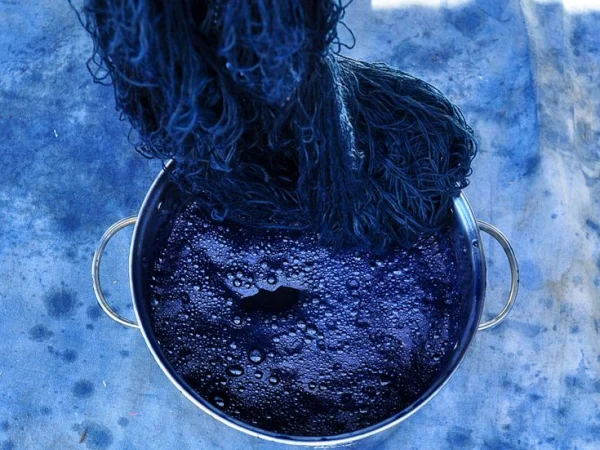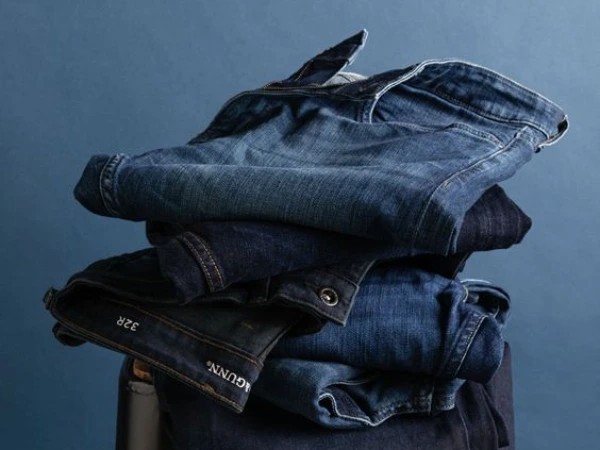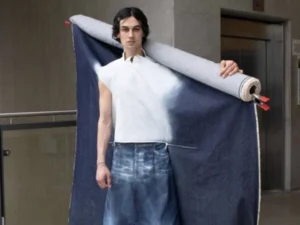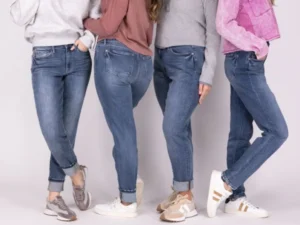Introduction
- Definition of denim dyeing
Denim dyeing is the process of imparting color to denim fabric using various dyeing techniques. It is a crucial step in the production of denim garments, as it determines the final appearance and quality of the fabric. The dyeing process involves the application of indigo or other dyes to the cotton yarn or fabric, resulting in the iconic blue color that denim is known for.
- Importance of denim dyeing in the fashion industry
Denim dyeing holds significant importance in the fashion industry, as denim is a staple fabric in the global market. The versatility, durability, and timeless appeal of denim make it a popular choice for clothing manufacturers and consumers alike. The dyeing process not only adds color to the fabric but also enhances its aesthetic appeal, making it a key factor in the overall design and fashion trends.
Historical Background of Denim Dyeing
- Origins of denim
The origins of denim can be traced back to the 18th century, with its roots in the sturdy cotton twill fabric produced in Nimes, France, known as “serge de Nimes,” from which the term “denim” is derived. The fabric gained popularity in the United States during the Gold Rush era, where it was used for durable workwear due to its ruggedness and strength.

- Evolution of denim dyeing techniques
The early denim fabric was initially dyed using natural indigo dye derived from plants. The dyeing process involved immersing the fabric in a vat of indigo dye multiple times to achieve the desired depth of color. Over time, with advancements in technology and chemistry, various dyeing techniques such as rope dyeing, slasher dyeing, and garment dyeing have been developed to meet the growing demand for denim products.
As denim became a symbol of rebellion and youth culture in the mid-20th century, the demand for unique washes and finishes led to further innovations in denim dyeing, giving rise to distressed, acid-washed, and stone-washed denim styles.
Main Methods of Denim Dyeing
- Rope Dyeing
Rope dyeing is a traditional method of dyeing denim yarn that involves passing the yarn through a series of indigo dye vats. The yarn is twisted into a rope-like structure, and as it passes through the vats, the indigo dye penetrates the outer layers of the yarn, creating a unique depth of color. This method is known for producing denim with a high contrast, as the core of the yarn remains undyed, resulting in the characteristic fading patterns seen in well-worn denim garments. Rope dyeing is favored for its ability to create a rich, indigo-dyed fabric with excellent color retention and fading properties.
- Slasher Dyeing
Slasher dyeing, also known as sheet dyeing, is a method commonly used for denim production on projectile or rapier looms. In this process, the denim fabric is passed through a series of dye baths, with the dye being applied to the surface of the fabric. Slasher dyeing allows for precise control over the application of the dye, resulting in a uniform and consistent coloration of the denim. This method is often preferred for producing denim with a solid, even wash of color, making it suitable for a wide range of garment styles and finishes.
- Garment Dyeing
Garment dyeing is a technique where the denim fabric is dyed after the garment has been constructed. This method allows for a wide variety of colors and washes to be achieved, as the entire garment is immersed in the dye bath. Garment dyeing offers flexibility in creating unique and customized denim products, as it allows for experimentation with different dye colors and treatments. This method is often used to produce fashion-forward denim pieces with a distinct, individualized appearance.
Effects of Denim Dyeing
- Colorfastness and Durability
The dyeing process significantly impacts the colorfastness and durability of denim. Properly dyed denim should exhibit excellent color retention, resisting fading and bleeding during wear and wash. The choice of dyeing method and dye type can influence the colorfastness of the fabric, ensuring that the denim retains its vibrant hue over time. Additionally, the dyeing process can enhance the strength and resilience of the fabric, contributing to the overall durability of denim garments.

- Aesthetic Appeal and Fashion Trends
Denim dyeing plays a pivotal role in shaping the aesthetic appeal and fashion trends of denim products. The method of dyeing, along with the type of dye and dyeing techniques, can create a wide spectrum of washes, shades, and finishes, catering to diverse consumer preferences. From classic indigo hues to vintage-inspired fades and contemporary color variations, the effects of denim dyeing influence the visual appeal and style of denim garments, reflecting the ever-evolving fashion landscape.
- Environmental Impact
The dyeing process in denim production has a significant environmental impact, particularly concerning the use of water, chemicals, and energy. Traditional dyeing methods may involve large quantities of water and chemical additives, leading to wastewater pollution and environmental concerns. However, advancements in sustainable dyeing technologies, such as eco-friendly dye formulations and water-saving processes, are being adopted to minimize the environmental footprint of denim dyeing. As the industry continues to prioritize sustainability, innovative dyeing practices are emerging to reduce the ecological impact of denim production.
Practical Examples of Denim Dyeing
- Case Study of a Renowned Denim Brand
One notable case study in the realm of denim dyeing is the approach taken by Levi Strauss & Co., a pioneering denim brand with a rich heritage in the industry. Levi’s® has been at the forefront of denim innovation, particularly in the realm of dyeing techniques. The brand’s commitment to quality and sustainability has led to the development of innovative dyeing methods aimed at reducing environmental impact while maintaining the iconic look and feel of their denim products.
Levi’s® has implemented sustainable dyeing practices, such as water-saving indigo dyeing processes and the use of eco-friendly dyes, to minimize the ecological footprint of their denim production. By integrating advanced dyeing technologies and responsible sourcing practices, Levi’s® has set a benchmark for environmentally conscious denim dyeing, demonstrating that it is possible to achieve both aesthetic excellence and sustainability in denim manufacturing.
- Comparison of Different Dyeing Methods in Denim Production
To further illustrate the impact of different dyeing methods, let’s consider a comparative analysis of rope dyeing, slasher dyeing, and garment dyeing in denim production. Each method offers distinct advantages and characteristics that contribute to the overall quality and appearance of denim products.
Rope dyeing, known for its ability to create high-contrast fades and intricate patterns, is often favored for premium denim brands seeking to achieve authentic vintage aesthetics. The unique roping effect and color variation produced by this method contribute to the individuality and character of the denim, appealing to denim enthusiasts and collectors.
In contrast, slasher dyeing excels in producing consistent, uniform coloration, making it suitable for mass production of denim fabrics with a clean, modern look. This method is often utilized by mainstream denim manufacturers to achieve a standardized appearance across a range of products, catering to broader consumer preferences.
Garment dyeing, on the other hand, offers versatility in creating a diverse spectrum of colors and washes, allowing for customization and experimentation in denim design. This method is particularly popular in contemporary fashion brands and designer labels, enabling them to introduce unique, fashion-forward denim pieces with distinctive color treatments and finishes.
By comparing these dyeing methods, it becomes evident that each approach contributes to the diversity and innovation within the denim industry, catering to different market segments and consumer demands.
Conclusion
- Recap of the Significance of Denim Dyeing
Denim dyeing stands as a fundamental process that shapes the identity and appeal of denim products, influencing their visual aesthetics, durability, and environmental impact. The methods of dyeing, whether traditional or innovative, play a pivotal role in defining the character and quality of denim, reflecting the artistry and craftsmanship inherent in the industry.
- Future Trends and Innovations in Denim Dyeing Techniques
Looking ahead, the future of denim dyeing is poised for continued advancements in sustainable practices and technological innovations. The industry is witnessing a shift towards eco-friendly dye formulations, water-conserving processes, and digital dyeing technologies, aimed at reducing the environmental footprint of denim production while expanding creative possibilities in coloration and design.

As consumer awareness of sustainability grows, denim brands are increasingly embracing responsible dyeing practices and transparency in their supply chains, paving the way for a more environmentally conscious and ethically driven approach to denim dyeing. The integration of cutting-edge dyeing techniques with a commitment to environmental stewardship will shape the next chapter of denim dyeing, ensuring that the art and science of denim continue to evolve in harmony with the principles of sustainability and innovation.
In conclusion, the methods of dyeing denim and their effects are integral to the evolution of the denim industry, driving the pursuit of excellence in craftsmanship, design, and environmental responsibility. As the art and science of denim dyeing continue to intersect, they will undoubtedly shape the future of denim fashion and manufacturing, embodying the enduring allure and ingenuity of this timeless fabric.





